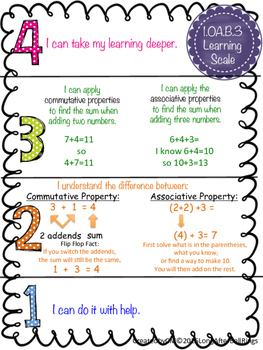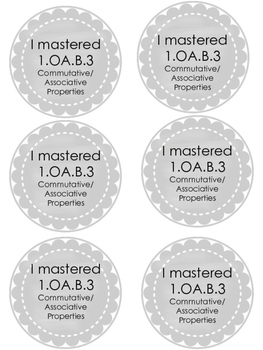Personalized Learning: Commutative and Associative Properties (Flip Flop Facts)
- PDF
Description
If you are just starting out in standards based instruction,
or need some help organizing, this product is for you!
- After introducing a new math standard, the learning scale will help your students visualize what they are going to need to understand at each level until they can completely master the skill.
- A pre-test and post-test are provided to score where they are on that progression of learning.
- Also, mastery buttons are included so students can celebrate their successes!
___________________________________________________________________
Please leave feedback, and click on the star to FOLLOW ME!
Be sure to check out my other products focused on personalized learning for math in first grade:
Personalized Learning: Commutative and Associative Properties
Personalized Learning: Comparing Numbers
Personalized Learning: True or False
Personalized Learning: Fractions
Personalized Learning: Defining and Non-Defining Attributes
Personalized Learning: 10 more/ 10 less
Personalized Learning: Representing Numbers
Personalized Learning: Composite and 3D shapes
Personalized Learning: Measurement
*Cover page: hello fonts, Lovin Lit, Cindy Calenti, Educlips





